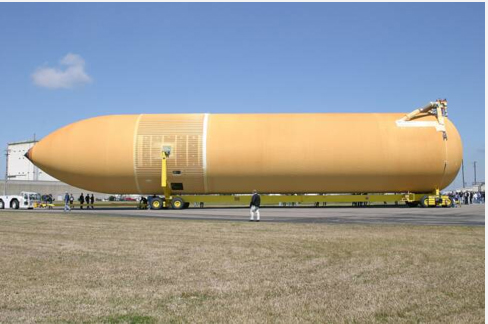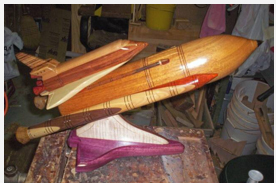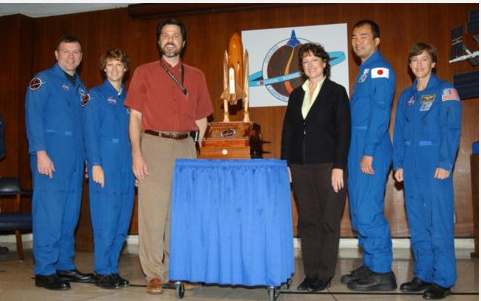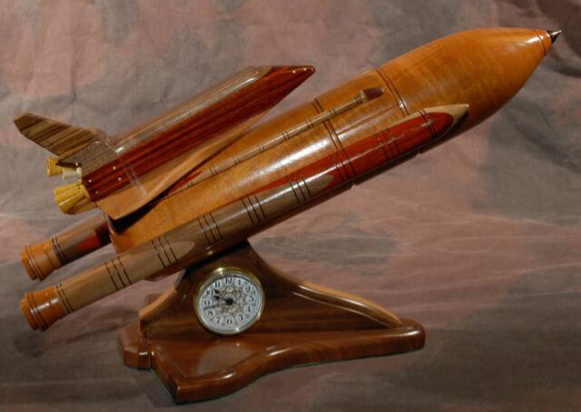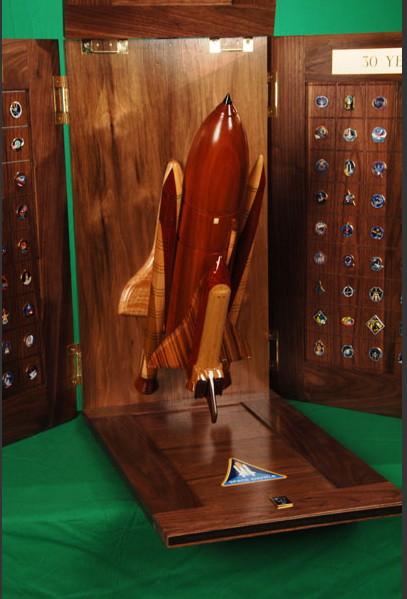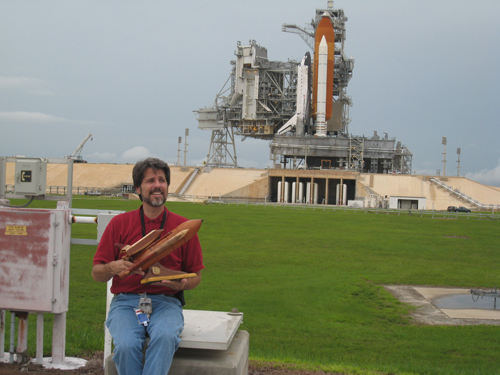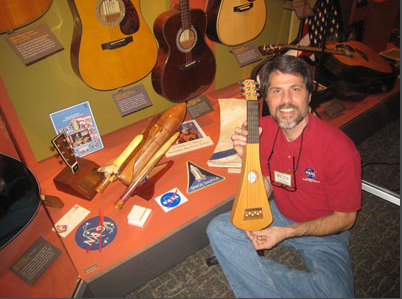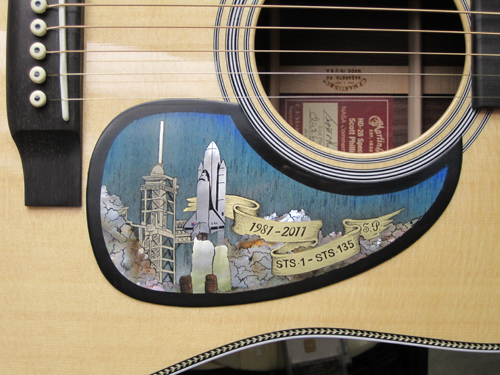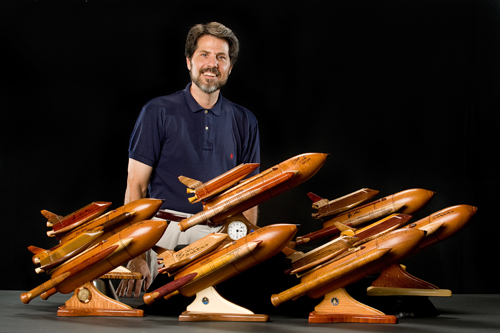
Scott “Shuttleman” Phillips has worked on the U.S. space shuttle program for over 30 years, from first launch to last. What does this have to do with woodworking, you may wonder?
He’s also created wooden models of every shuttle flight.
“They’re art pieces, not scale models,” Scott is quick to point out, with his wood choices for the pieces incorporating some of the astronomical symbolism dating to the Apollo-era “big blue marble” photo of an Earth seen from space. “When the astronauts fly over, they don’t see borders,” Scott reminds us. “I like to get a wood from each continent.”
Honduran mahogany or sapele, for example, work well for creating the external tank on his shuttle models. The woods are easy to carve and have a color that’s characteristic of the tank — the part of the shuttle that Scott works on as a logistics engineer for Lockheed Martin.
For the rest of the models, he likes to vary the woods. “I love to study dendrology. I want to experience as many woods as I can,” he said.
Scott also notes that, “All the woods I’ve ever put together all go very well together. I don’t paint or stain; I just lacquer and let the natural wood shine through.”
Since Scott prefers to use “nothing but raw wood,” he avoids potential problems with the woods’ natural oils — such as a piece of teak and a piece of osage orange not binding together with glue — through a deglossing process. Using an industrial spray bottle, found at a big box store, filled with Crown® Liquid Deglosser, “I mist the whole project, then I let it evaporate,” Scott said. “It highlights the model and will show all the scratches; then I remove them and spray it again. Usually on the first or second spray, it’s as smooth as a baby’s you-know-what. I let [the deglosser] evaporate — don’t rub it off — and it finishes very easily.”
He’s also created a standard base that adds stability to the shuttle models — each of which takes 45 to 50 hours to build. None of them are ever a duplicate, but a couple of the over 150 models are special enough to earn display space at his home. (Scott’s wife, Dianne, limited the 20-plus displays in his home after they married and began a family. He does have around 25 of them stored for his posterity, as well as pieces in museums and owned by others.)
The two he’s currently keeping are models of shuttle flights STS-114, signed by first female shuttle commander Eileen Collins (also commander on that flight), and STS-125, the final Hubble Space Telescope repair mission. Flight commander Scott Altman and the rest of the crew also signed that model, which houses a clock face in the base. Scott Phillips won first place with it in the Best Mantle or Desk Clock division of clock supply company Klockit’s 2009 contest.
Many of Scott’s other models have also been signed by shuttle crews and astronauts, such as John Glenn and first shuttle flight pilot Bob Crippen. “The shuttle team is like a family,” says Scott, who has also created pieces as retirement gifts for astronauts.
That’s one reason last Friday’s final shuttle launch was bittersweet for him. Scott and wife Dianne traveled from Alabama, where Scott works at the Marshall Space Flight Center, to Florida to witness the last launch of space shuttle Atlantis from the Kennedy Space Center at Cape Canaveral. Also going along were their 11- and 10-year-old boys, Christian and Tyler. With children that age, Scott said, he regrets that “we’re no longer in human space flight, for the foreseeable future.”
“At this point in time, this country’s done great things with the shuttle. I think it’s a mistake giving the shuttle up. We should have had something in place before we quit.”
To the last shuttle flight, Scott took along a piece of woodworking he didn’t build – the custom-built guitar he received from the C.F. Martin Guitar Company earlier this year. Of course, there is a shuttle connection: the guitar itself has an inlay of first shuttle flight STS-1 — and, while he was at the company headquarters in Pennsylvania picking up his guitar in January, Scott also presented C.F. Martin with one of his shuttle models, to be displayed in their museum next to the first American guitar in space. The C.F. Martin Company had provided Scott with some of the woods used in the model, including ebony cutoffs from a custom guitar for David Crosby of folk rock singers Crosby, Stills and Nash — used to make the external tank nosecone — and Brazilian rosewood from the personal collection of museum curator Dick Boak — used in the body of the orbiter.
It was researching Martin Guitar history that originally inspired Scott to add serial numbers to his own shuttle models. As the shuttle program winds down, he’ll be chronicling his involvement in its history with a book entitled Remove Before Flight. The memoir’s title comes from Scott’s being the last technician out of the first Shuttle External Tank (ET1) before flight: he grabbed the three-foot long red “remove before flight” ribbon meant to mark items temporarily attached to the shuttle and kept it.
He also occasionally does other types of woodworking — in addition to clocks, he’s built an Adirondack chair — but it’s the space shuttle models that have really made Scott’s woodworking take flight.
